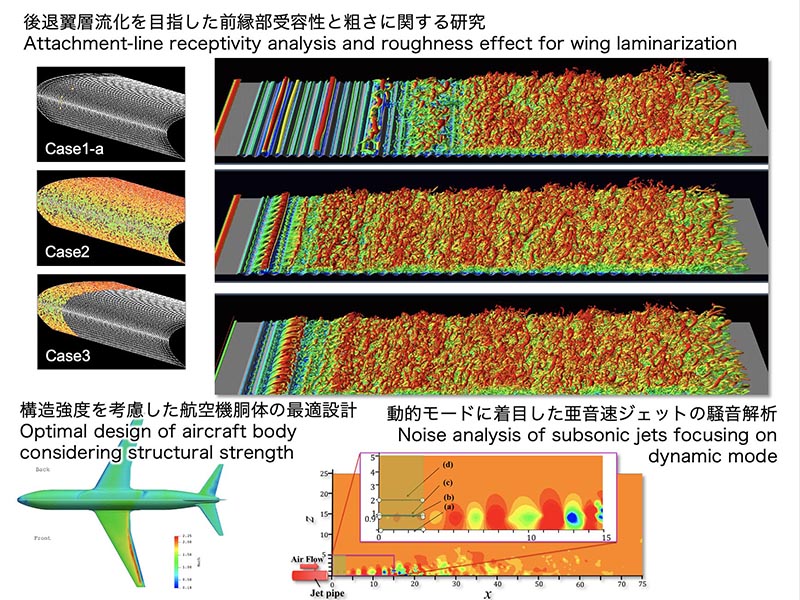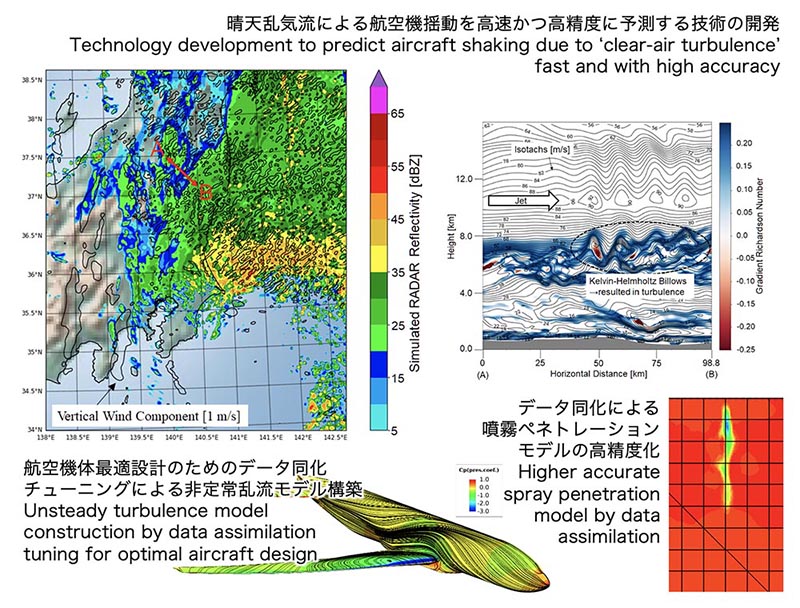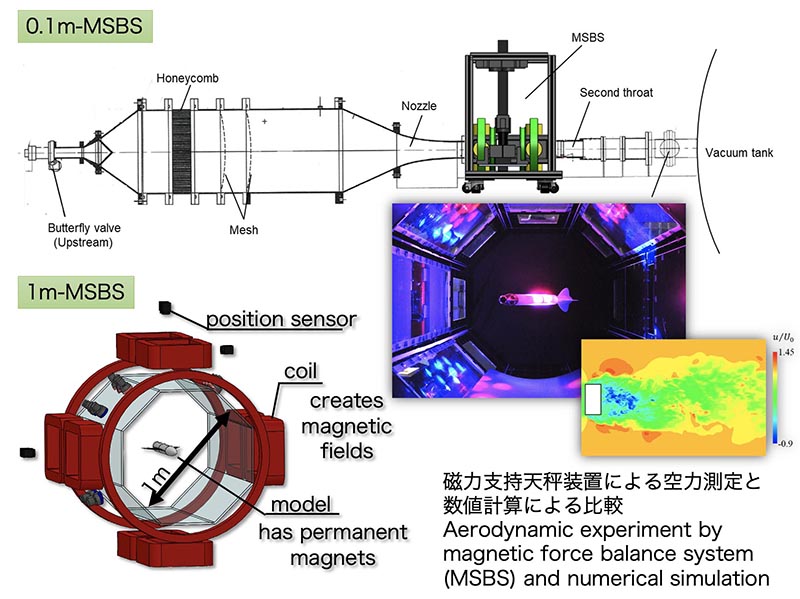Creative Flow Research Division
Aerospace Fluid Engineering Laboratory

ProfessorShigeru Obayashi

Associate ProfessorAiko Yakeno
Computational Fluid Dynamics (CFD) is a discipline that reproduces the state of a fluid motion inside or around an object by computers, elucidates the phenomena, and designs fluid devices. With the progress in computer performance, CFD technologies have been evolving in terms of accuracy and usefulness day by day. Aiming at further utilization and development of CFD technologies, this laboratory is promoting trans-disciplinary researches, which is motivated by the integration of CFD with other science and technologies. We are working on elucidation and control of various unsolved problems related to nonlinear flow phenomena, fluid information extraction technology for aircraft aerodynamic design, data assimilation, by applying supercomputers, wind tunnel experiments, and the latest data science, aiming for further innovation in aerospace fluid engineering.
Aerospace fluid phenomena and advanced computational fluid dynamics using data science
Friction drag due to the viscosity of air is considerable when an aircraft operates, which is almost half of the total drag. If we delay a laminar-turbulence transition and cover the wing surface with laminar flow, we can reduce the viscous drag effectively. We are carrying on huge direct numerical simulations by a supercomputer around an attachment line of a swept wing for the flow stability analysis to clarify the three-dimensional transition mechanism in detail, depending on the surface roughness, to develop the superior laminar swept wing. In addition, we study jet sound generation mechanism using the extraction of characteristic flow structure by focusing on dynamic mode decomposition, and optimal design of aircraft body considering structural strength.
Improvement of time and accuracy of flow computation by the reduced order modeling and the observation
We develop the data-assimilation method that corrects the initial value of a numerical simulation model so as to reproduce sparse information obtained by experiments and observations, in order to achieve fast and accurate flow simulation. Currently, we are working to predict clear air turbulence (CAT), by conducting case analysis of an actual aircraft accident. In addition, a high-speed and highly accurate numerical model is required for the optimum design of the aircraft body. In our laboratory, we are also working on the construction of the latest unsteady turbulence model by parameter tuning with data assimilation. In addition, we are improving the accuracy of the spray penetration model in the combustor using data assimilation too.
Wind tunnel experiments with the magnetic suspension and balance system (MSBS) ・Flow investigation by highly-resolved unsteady numerical simulation
We have been developing a magnetic suspension and balance system (MSBS), which is capable to support a model in the wind tunnel and to control its attitude by the magnetic force. Currently, we are working on improving the measurement techniques to support without noise, to respond quickly, to control and measure the unsteady aerodynamic force, and to support very low-fineness ratio models. We have successfully compared the experimental results with those obtained from a huge parallel computation. We try to research for new knowledge of fluid physics and building innovative design technologies by fusing on integration of experiments and numerical calculations.



